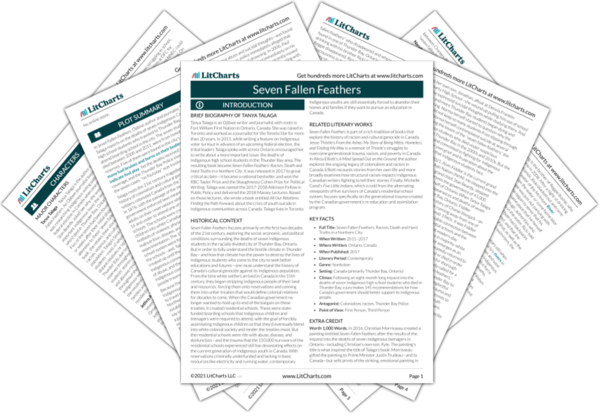Here, Talaga highlights the importance of understanding cultural division and generational trauma in order to make sense of the violence that’s being perpetrated against Indigenous Canadians in the present day. Without a rigorous understanding of the generations of colonial violence that define Canada’s foundation, Talaga argues, one can’t comprehend the patterns of suffering, powerlessness, and vulnerability that marks so much of the contemporary Indigenous Canadian experience. In this way, Talaga refuses to let Indigenous people be blamed for the issues they continue to face in Canada. Any such issues, Talaga makes clear, are a legacy of Canada’s colonialist and racist past treatment of Indigenous people.


